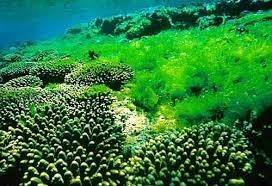A concerning amount of seaweed has disappeared from the waters surrounding the United Kingdom, and the extent of this loss has been found to be much greater than scientists previously thought.
In a new study published by the UK scientific organization Frontiers, researchers found that at least 44% of seaweed has been lost from this area since 1936. The study also indicates that nearly 40% of the total loss of seaweed in the UK occurred in recent decades. This study was a collaborative effort by experts from University College London, King’s College London, and Swansea University. The study's lead author, Dr. Alex Green, stated: “Our paper provides the best estimate of the extent of current seaweed loss in the UK, confirming that at least 8,493 hectares, or 39% of seagrass cover, have been lost over the past thirty years. Historically, we have shown that this loss could reach up to 92%, and that these seagrass meadows can store up to 11.4 million tons of carbon and support oxygen provision underwater for nearly 400 million fish.”
Notably, despite covering only 0.1% of the ocean floor worldwide, seagrass meadows are one of the largest global carbon sinks on Earth, with seagrass storing carbon faster than terrestrial forests. This means they are a highly valuable asset against climate change, but due to human activities like coastal development, these seagrass meadows are rapidly declining. While the current status of many seagrass meadows is unknown, previous studies estimated that about 30% of seagrass meadows have been lost worldwide.
It is noteworthy that there are two native species of seagrass in the UK, Zostera marina and Zostera noltii, both of which are protected by law. To estimate the extent of seagrass loss, researchers analyzed various datasets, and the findings highlighted the urgent need for protecting seagrass meadows and restoring those that have degraded or been lost. Co-author Dr. Peter Jones explained that the next decade is a critical opportunity to address the interconnected crises of biodiversity loss and climate change, and that restoring seagrass meadows would be a significant and valuable contribution towards this goal. This could include implementing various restrictions such as minimizing damage to seagrass caused by boat anchoring, limiting harmful fishing methods, and reducing coastal pollution, including in legally protected marine areas.




